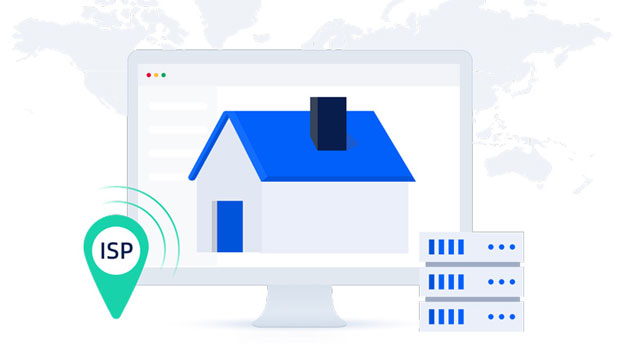In today's digital world, using residential IP services has become a common solution for individuals and businesses seeking secure, reliable, and flexible online access. Two popular options in this market are PYPROXY and CroxyProxy, both offering unique features suited for different needs. PyProxy is known for its robust security measures and excellent customer support, while CroxyProxy stands out for its speed and ease of use. In this article, we will compare the advantages of these two services in residential IP solutions, focusing on their features, benefits, and how they cater to various use cases. 1. PyProxy’s Strengths in Residential IP ServicesPyProxy is a well-established player in the residential IP service industry, known for providing high-quality, secure, and efficient IP solutions for both personal and business use. One of its key advantages is its strong security protocols, which ensure user data remains private and safe. PyProxy uses advanced encryption technologies to protect the privacy of users, making it a trusted choice for those concerned about data security.Another significant advantage of PyProxy is its scalability. Whether you are a small business or a large corporation, PyProxy can easily accommodate your needs. The service offers flexible packages that allow businesses to scale up or down based on their usage requirements. Furthermore, its integration capabilities with third-party applications make it an ideal choice for businesses that rely on a variety of tools to manage their operations.2. CroxyProxy’s Strengths in Residential IP ServicesCroxyProxy, on the other hand, excels in areas where speed and user experience are the top priorities. The service is known for its fast and seamless performance, ensuring minimal latency during online activities. This is especially beneficial for users who require high-speed access for activities like streaming, gaming, or browsing.One of CroxyProxy’s major selling points is its simplicity. The interface is user-friendly, making it accessible for both novice and experienced users. It does not require complex setups or technical expertise, which is a significant advantage for those who want a quick and hassle-free solution for residential IP services.In addition to its speed and ease of use, CroxyProxy offers a wide range of IP locations, providing users with a global presence. This allows users to access geo-restricted content and browse the internet as though they are in different countries, offering more flexibility and freedom in their online activities.3. Security Features: PyProxy vs. CroxyProxyWhen it comes to security, PyProxy has the upper hand. With its sophisticated encryption technology and robust protocols, PyProxy ensures that all user traffic remains secure and private. It employs multiple layers of security, including firewall protection, DDoS protection, and advanced IP masking, which are crucial for maintaining anonymity and safeguarding sensitive information online.In comparison, CroxyProxy provides essential security features, such as HTTPS support, but does not offer the same level of protection as PyProxy. While it is suitable for everyday browsing and streaming, those with more sensitive data or higher security needs may prefer PyProxy’s more robust security offerings.4. Performance: Speed and ReliabilityPerformance is a critical factor when choosing a residential IP service, and CroxyProxy shines in this area. Its low-latency connections ensure that users experience minimal buffering or lag, making it ideal for activities like HD streaming or online gaming. The service’s global network of proxies also helps ensure that users get fast and reliable access to various online services, regardless of their location.PyProxy, while reliable, tends to have slightly higher latency compared to CroxyProxy, especially for users located far from the service’s main data centers. However, its consistent performance and secure connections make it a strong contender for users who prioritize security over speed.5. Customer Support: PyProxy vs. CroxyProxyCustomer support is another crucial aspect to consider when selecting a residential IP service. PyProxy excels in this area, offering 24/7 customer support through multiple channels, including live chat, email, and phone. This level of support ensures that users can quickly resolve any issues they encounter, making PyProxy a reliable choice for those who may need assistance with setup, troubleshooting, or other technical concerns.CroxyProxy, while offering customer support, does not provide the same level of responsiveness or depth as PyProxy. Its support is more basic, and users may need to rely on online forums or FAQs for troubleshooting, which can be a drawback for those who require immediate assistance.6. Pricing and FlexibilityPricing is a crucial factor for many users when deciding between PyProxy and CroxyProxy. PyProxy offers a variety of pricing tiers based on usage, which is ideal for businesses or power users who need scalable solutions. While it is generally more expensive than CroxyProxy, the additional cost is justified by the service’s superior security features and comprehensive support.CroxyProxy, on the other hand, is more affordable and offers great value for users who prioritize speed and ease of use over advanced security. Its pricing structure is straightforward, with a variety of plans available to suit different needs, making it an attractive option for individuals or small businesses that need a simple, cost-effective residential IP solution.7. Use Cases: When to Choose PyProxy vs. CroxyProxyChoosing between PyProxy and CroxyProxy largely depends on the specific needs of the user. If security is your top priority, PyProxy is the better option. Its advanced encryption, secure connections, and extensive customer support make it the ideal choice for those who need to protect sensitive data or ensure secure online activity.On the other hand, if speed, ease of use, and affordability are your main concerns, CroxyProxy may be the better fit. Its fast performance, simple setup process, and global presence make it an excellent choice for those who primarily use residential IP services for streaming, browsing, or other low-security activities.Conclusion: Making the Right Choice for Residential IP ServicesIn conclusion, both PyProxy and CroxyProxy offer significant advantages in the residential IP service market. PyProxy stands out for its robust security features, scalability, and excellent customer support, making it ideal for businesses or users with high security and performance needs. CroxyProxy, on the other hand, excels in speed, ease of use, and affordability, making it a great option for those who prioritize performance and simplicity.Ultimately, the best choice depends on your specific requirements. By carefully considering the key advantages of each service, you can select the residential IP provider that best meets your needs, whether you prioritize security, speed, or cost-effectiveness.
Sep 02, 2025



































































